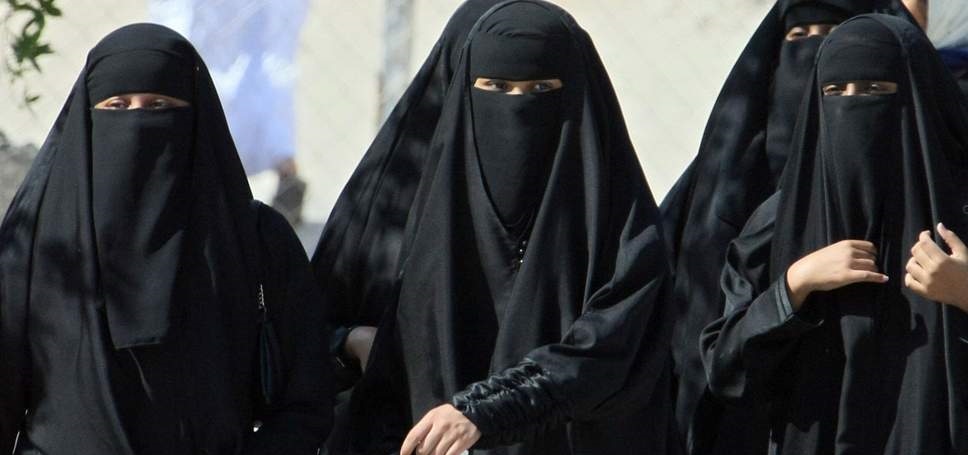The trillion-dollar market
June 13, 2018 | Expert Insights

Working women, who are part of the Muslim world, are now a trillion-dollar market. A new report from the World Economic Forum has revealed that the advent of globalization has resulted in more Muslim women in the workforce.
Background
The terms Muslim world and Islamic world commonly refer to the unified Islamic community (Ummah), consisting of all those who adhere to the religion of Islam. The history of the Muslim world spans about 1,400 years.
As of 2013, the combined GDP (nominal) of 49 Muslim majority countries was US$5.7 trillion. In 2016, they contributed 8% of the world's total GDP. According to the latest estimates, there are currently around 1.8 billion Muslims living in the world. This constitutes to around 24.1% of the world population in total. In Bangladesh and Indonesia, two majority Muslim countries with high female labor force participation rates, 11.70% and 31.70% of female workers are salaried, respectively. Perhaps counter intuitively, majority Muslim countries such as Egypt, Iran, Syria, and Tunisia which have low rates of female labor force participation and a relatively small number of actual female labor forces have high rates of female salaried employees. In Egypt, 47.9% of employed females have salaried jobs.
In Iran, 46.8% of female workers are salaried and in Tunisia, the percentage is 69.1%. Perhaps the most surprising case is Syria where 74.30% of women are salaried. This is the largest percentage in the Middle East and one of the highest in the entire Muslim world.
In recent years, some of the nations in the so-called Muslim world have been modernizing their society. One of the prime examples of this trend is Saudi Arabia. In April 2017, Saudi Arabia’s King Salman issued an order to all government agencies that women should not be denied access to government services because they do not have a male guardian’s consent unless specific rules require a male guardian. Currently, women can’t marry, divorce, travel, open a bank account, get a job, or have elective surgery without permission from their male guardians. Women can now even drive in Saudi Arabia – something that was not allowed until recently.
Analysis
The advent of modernization has also resulted in more women entering the workforce in predominantly Muslim dominated nations. According the Harvard Business Review, the “increase of women in the paid workforce was arguably the most significant change in the economy in the past century.” This applies to the Muslim countries too.
The rate of education in women has also dramatically increased. According to a report from McKinsey, within the span of just two generations, the rate of female enrolment in cities like Tehran and Tunis have significantly grown. The report states that within the past ten years, nearly 40 million women have joined the labor force. It notes that 9 million of them are in the Arab world. Eight million women joined the workforce in the past decade in Indonesia. In Pakistan and Bangladesh, nearly 7 million women began working.
The World Economic Forum notes that women in the Muslim world have particularly seen success in STEM education (Science, Tech, Engineering, Math). It also notes that an unprecedented 50 million women joined the workforce since 2000. It states, “Working women now represent 30% of the 450 million women in Muslim-majority economies.” The organization states that a combination of globalization, technology, ambition, and economic necessity has resulted in this economic revolution. It adds, “Working women and their disposable income represent a huge new market, with earnings that amount to nearly $1 trillion. The new generation of working women are worldly and digitally connected. They are tapping into and creating new demand in a wide variety of fields, from education, health and food to finance, fashion and IT.” As more women enter the workforce, the GDPs of these nations are also poised to dramatically increase. If the Muslim world is able to achieve equal workforce in their societies, then it would end up adding a significant $5.7 trillion in terms of income of these nations.
Assessment
Our assessment is that there is an indefinite exclusion of women in most diverse spheres of private and public life due to cultural and societal factors, which lead to structural disadvantage in the roles and positions of women leading to the ‘glass ceiling’. However, perhaps economics can become a catalyst in ensuring gender parity at least in the workplace. By increasing female participation in the workforce, not only will society be able to reduce the overall ‘gender inequality’ but it will also increase the level of ‘per capita income’.
Read more: The trillion-dollar company?








Comments